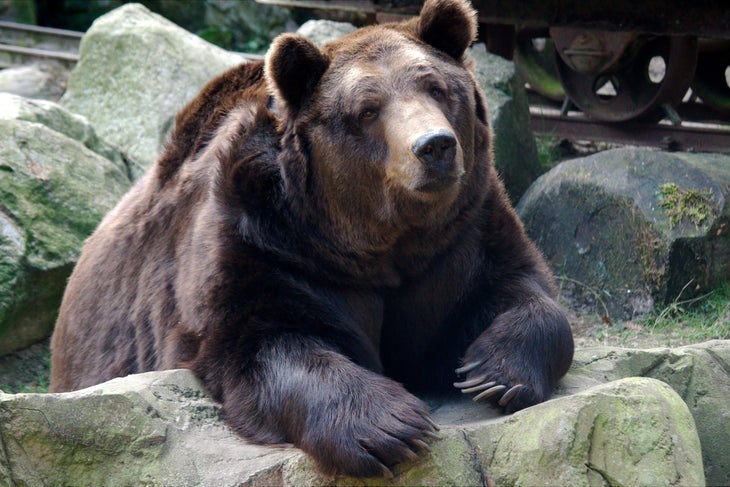Heading out the door? Read this article on the new Outside+ app available now on iOS devices for members! Download the app.

Q: When you sleep, your heart rate and temperature both plummet. In places like Alaska it can get down to -50°F in the winter. Do you ever worry about freezing to death? —Chilly Charlie
A: Oh, tiny human, your concern is adorable. (Seriously, though, I do appreciate it.)
I may not be apprised of the whole “hot water in a Nalgene” technique, but I do have a few tricks up my sleeve for staying warm in winter. For one, I don’t actually “hibernate,” in the true lights-out, nobody-home, heartrate-zero kind of way. I’m not like a hibernating ground squirrel: You could drop one of those numbskulls off Half Dome and it still wouldn’t wake up.
Bears, on the other hand, do this thing called “estivation.” It lets us maintain a little more metabolic activity, which helps maintain some warmth. It also means we can wake up when we need to—say, to address a crying cub, or to greet an unwelcome party who tries to mess with us.
We also hole up in a posture that minimizes heat loss. (You say fetal position, I say child’s pose. Potayto, Potahto. Namaste.)
Finally—and you might not be able to relate to this—we have this thing called fur. It’s super thick, multi-layered, and way better than your 800-fill sleeping bag. We do have a few extra inches of fat going into winter, but it’s not quite as insulating like seal blubber might be. Instead, we rely primarily on our fur, and secondarily on the den surrounding us. We go for hollow trees, little caves, holes in hillsides—we like tight fit for the same reasons you like a mummy bag. Add a few feet of insulating snow on top of that? Freeze-proof.
